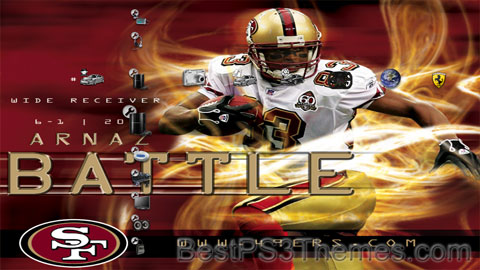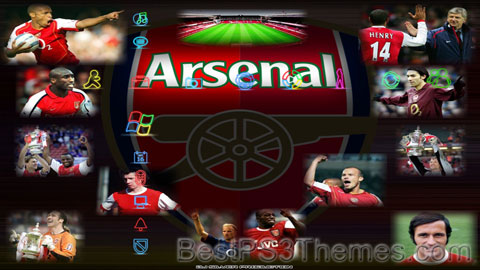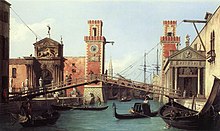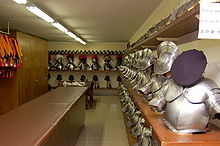Pro Evolution Soccer theme by Oblaps
Download: PES2008_2.p3t

(3 backgrounds)
Redirect to:

The #1 spot for Playstation themes!
Habs theme by darknight
Download: Habs.p3t

(2 backgrounds)
Redirect to:
This page is a redirect. The following categories are used to track and monitor this redirect:
|
49ers theme by ryanindy24
Download: 49ers.p3t

(7 backgrounds)
Redirect to:
This page is a redirect. The following categories are used to track and monitor this redirect:
|
Wales SD theme by agentcrofty
Download: WalesSD.p3t

(3 backgrounds, wallpapers SD only)
P3T Unpacker v0.12
Copyright (c) 2007. Anoop Menon
This program unpacks Playstation 3 Theme files (.p3t) so that you can touch-up an existing theme to your likings or use a certain wallpaper from it (as many themes have multiple). But remember, if you use content from another theme and release it, be sure to give credit!
Download for Windows: p3textractor.zip
Instructions:
Download p3textractor.zip from above. Extract the files to a folder with a program such as WinZip or WinRAR. Now there are multiple ways to extract the theme.
The first way is to simply open the p3t file with p3textractor.exe. If you don’t know how to do this, right click the p3t file and select Open With. Alternatively, open the p3t file and it will ask you to select a program to open with. Click Browse and find p3textractor.exe from where you previously extracted it to. It will open CMD and extract the theme to extracted.[filename]. After that, all you need to do for any future p3t files is open them and it will extract.
The second way is very simple. Just drag the p3t file to p3textractor.exe. It will open CMD and extract the theme to extracted.[filename].
For the third way, first put the p3t file you want to extract into the same folder as p3textractor.exe. Open CMD and browse to the folder with p3extractor.exe. Enter the following:
p3textractor filename.p3t [destination path]Replace filename with the name of the p3t file, and replace [destination path] with the name of the folder you want the files to be extracted to. A destination path is not required. By default it will extract to extracted.filename.
Pittsburgh Steelers theme by Malus
Download: PittsburghSteelers.p3t

(3 backgrounds)
| Pittsburgh Steelers | |||||
|---|---|---|---|---|---|
| Established July 8, 1933[1] First season: 1933 Play in Acrisure Stadium Pittsburgh, Pennsylvania Headquartered in UPMC Rooney Sports Complex Pittsburgh, Pennsylvania Training camp in Latrobe, Pennsylvania | |||||
| |||||
| League/conference affiliations | |||||
National Football League (1933–present)
| |||||
Current uniform | |||||
| Team colors | Black, gold[2][3] | ||||
| Mascot | Steely McBeam | ||||
| Website | steelers.com | ||||
| Personnel | |||||
| Owner(s) | Rooney family | ||||
| President | Art Rooney II[4] | ||||
| General manager | Omar Khan | ||||
| Head coach | Mike Tomlin | ||||
| Team history | |||||
| Team nicknames | |||||
| |||||
| Championships | |||||
| League championships (6) | |||||
| Conference championships (8) | |||||
| Division championships (24) | |||||
| Playoff appearances (34) | |||||
| Home fields | |||||
Temporary stadiums 1943 due to loss of players during World War II (temporary merger with Philadelphia Eagles):
1944 due to loss of players during World War II (temporary merger with Chicago Cardinals):
| |||||
| Team owner(s) | |||||
| |||||
| Team president(s) | |||||
| |||||
The Pittsburgh Steelers are a professional American football team based in Pittsburgh. The Steelers compete in the National Football League (NFL) as a member club of the American Football Conference (AFC) North Division. Founded in 1933, the Steelers are the seventh-oldest franchise in the NFL, and the oldest franchise in the AFC.[5]
In contrast with their status as perennial also-rans in the pre-merger NFL, where they were the oldest team never to have won a league championship, the Steelers of the post-merger (modern) era are among the most successful NFL franchises, especially during their dynasty in the 1970s.[6][7][8] The team is tied with the New England Patriots for the most Super Bowl titles at six, and they have both played in (16 times) and hosted (11 times) more conference championship games than any other team in the NFL. The Steelers have also won eight AFC championships, tied with the Denver Broncos, but behind the Patriots' record 11 AFC championships. The team is tied with the Broncos and Dallas Cowboys for the second-most Super Bowl appearances with eight.
The Steelers, whose history may be traced to a regional pro team that was established in the early 1920s, joined the NFL as the Pittsburgh Pirates on July 8, 1933. The team was owned by Art Rooney and took its original name from the baseball team of the same name, as was common practice for NFL teams at the time.[5] To distinguish them from the baseball team, local media took to calling the football team the Rooneymen, an unofficial nickname that persisted for decades after the team had adopted its current nickname. The ownership of the Steelers has remained within the Rooney family since the organization's founding.[9] Art Rooney's son, Dan Rooney, owned the team from 1988 until his death in 2017. Much control of the franchise has been given to Dan Rooney's son, Art Rooney II.
The Steelers enjoy a large, widespread fanbase nicknamed Steeler Nation.[10] They currently play their home games at Acrisure Stadium on Pittsburgh's North Side in the North Shore neighborhood, which also hosts the University of Pittsburgh Panthers. Built in 2001 as Heinz Field, the stadium replaced Three Rivers Stadium, which had hosted the Steelers for 31 seasons. Prior to Three Rivers, the Steelers had played their games in Pitt Stadium and at Forbes Field.
The Pittsburgh Steelers of the NFL first took to the field as the Pittsburgh Pirates on September 20, 1933, losing 23–2 to the New York Giants.[5] Through the 1930s, the Pirates never finished higher than second place in their division, or with a record better than .500 (1936).[11] Pittsburgh did make history in 1938 by signing Byron White, a future Justice of the U.S. Supreme Court, to what was at the time the biggest contract in NFL history, but he played only one year with the Pirates before signing with the Detroit Lions.[5][12] Prior to the 1940 season, the Pirates renamed themselves the Steelers.
During World War II, the Steelers experienced player shortages. They twice merged with other NFL franchises to field a team. During the 1943 season, they merged with the Philadelphia Eagles forming the "Phil-Pitt Eagles" and were known as the "Steagles". This team went 5–4–1. In 1944, they merged with the Chicago Cardinals and were known as Card-Pitt (or, mockingly, as the "Carpets").[5] This team finished 0–10, marking the only winless team in franchise history.[13]
The Steelers made the playoffs for the first time in 1947, tying for first place in the division at 8–4 with the Philadelphia Eagles. This forced a tie-breaking playoff game at Forbes Field, which the Steelers lost 21–0.[14] That would be Pittsburgh's only playoff game in the pre-merger era; they did qualify for a "Playoff Bowl" in 1962 as the second-best team in their conference, but this was not considered an official playoff.[15]
In 1970, the year they moved into Three Rivers Stadium and the year of the AFL–NFL merger, the Pittsburgh Steelers were one of three old-guard NFL teams to switch to the newly formed American Football Conference (the others being the Cleveland Browns and the Baltimore Colts), in order to equalize the number of teams in the two conferences of the newly merged league. The Steelers also received a $3 million ($23.5 million today) relocation fee, which was a windfall for them; for years they rarely had enough to build a true contending team.[16]

The Steelers' history of bad luck changed with the hiring of coach Chuck Noll from the NFL champion Baltimore Colts for the 1969 season. Noll's most remarkable talent was in his draft selections, taking Hall of Famers "Mean" Joe Greene in 1969, Terry Bradshaw and Mel Blount in 1970, Jack Ham in 1971, Franco Harris in 1972,[17] and finally, in 1974, pulling off the incredible feat of selecting five Hall of Famers in one draft year, Lynn Swann, Jack Lambert, John Stallworth, Donnie Shell and Mike Webster.[18] The Pittsburgh Steelers' 1974 draft was their best ever; no other team has ever drafted five future Hall of Famers in one year, and only very few (including the 1970 Steelers) have drafted two or more in one year.
The players drafted in the early 1970s formed the base of an NFL dynasty, making the playoffs in eight seasons and becoming the only team in NFL history to win four Super Bowls in six years, as well as the first to win more than two. They also enjoyed a regular-season streak of 49 consecutive wins (1971–1979) against teams that would finish with a losing record that year.
The Steelers suffered a rash of injuries in the 1980 season and missed the playoffs with a 9–7 record. The 1981 season was no better, with an 8–8 showing. The team was then hit with the retirements of all their key players from the Super Bowl years. "Mean" Joe Greene retired after the 1981 season, Lynn Swann and Jack Ham after 1982's playoff berth, Terry Bradshaw and Mel Blount after 1983's divisional championship, and Jack Lambert after 1984's AFC Championship Game appearance.
After those retirements, the franchise skidded to its first losing seasons since 1971. Though still competitive, the Steelers would not finish above .500 in 1985, 1986, and 1988. In 1987, the year of the players' strike, the Steelers finished with a record of 8–7, but missed the playoffs. In 1989, they would reach the second round of the playoffs on the strength of Merrill Hoge and Rod Woodson before narrowly missing the playoffs in each of the next two seasons, Noll's last seasons.
Noll's career record with Pittsburgh was 209–156–1.
In 1992, Chuck Noll retired and was succeeded by Kansas City Chiefs defensive coordinator Bill Cowher, a native of the Pittsburgh suburb of Crafton.

Cowher led the Steelers to the playoffs in each of his first six seasons, a feat that had been accomplished only by legendary coach Paul Brown of the Cleveland Browns. In those first six seasons, Cowher coached them as deep as the AFC Championship Game three times and following the 1995 season an appearance in Super Bowl XXX on the strength of the "Blitzburgh" defense. However, the Steelers lost to the Dallas Cowboys in Super Bowl XXX, two weeks after a thrilling AFC Championship victory over the Indianapolis Colts. Cowher produced the franchise's record-tying fifth Super Bowl win in Super Bowl XL over the NFC champion Seattle Seahawks ten years later. With that victory, the Steelers became the third team to win five Super Bowls, and the first sixth-seeded playoff team to reach and win the Super Bowl since the NFL expanded to a 12-team post-season tournament in 1990. He coached through the 2006 season which ended with an 8–8 record, just short of the playoffs. Overall Cowher's teams reached the playoffs 10 of 15 seasons with six AFC Championship Games, two Super Bowl berths and a championship.
Cowher's career record with Pittsburgh was 149–90–1 in the regular season and 161–99–1 overall, including playoff games.[19]

On January 7, 2007, Cowher resigned from coaching the Steelers, citing a need to spend more time with his family. He did not use the term "retire", leaving open a possible return to the NFL as coach of another team. A three-man committee consisting of Art Rooney II, Dan Rooney, and Kevin Colbert was set up to conduct interviews for the head coaching vacancy.[20] On January 22, 2007, Minnesota Vikings defensive coordinator Mike Tomlin was announced as Cowher's successor as head coach. Tomlin is the first African-American to be named head coach of the team in its 75-year history. Tomlin became the third consecutive Steelers Head Coach to go to the Super Bowl, equaling the Dallas Cowboys (Tom Landry, Jimmy Johnson and Barry Switzer) in this achievement. He was named the Motorola 2008 Coach of the Year. On February 1, 2009, Tomlin led the Steelers to their second Super Bowl of this decade, and went on to win 27–23 against the Arizona Cardinals. At age 36, he was the youngest head coach to ever win the Super Bowl, and he is only the second African-American coach to ever win the Super Bowl (Tony Dungy was the first). The 2010 season made Tomlin the only coach to reach the Super Bowl twice before the age of 40 as he took the team to Super Bowl XLV on February 6, 2011. However, the Steelers were defeated by the Green Bay Packers, 31–25. The Steelers recorded their 400th victory in 2012 after defeating the Washington Redskins.[21]
Through the end of the 2021 season, Tomlin's record is 162–94–2 (.632), including playoffs. He is the first Pittsburgh coach to never post a losing season. The 2013–17 seasons were noted for record performances from the "Killer B's". This trio consisted of Antonio Brown, Ben Roethlisberger and Le'Veon Bell. Occasionally, the "Killer B's" has also included kicker Chris Boswell due to his ability to hit game-winning field goals.
Since the NFL merger in 1970, the Pittsburgh Steelers have compiled a regular-season record of 444–282–2 (.635) and an overall record of 480-305-2 (.635) including the playoffs, reached the playoffs 30 times, won their division 22 times, played in 16 AFC championship games, and won six of eight Super Bowls. They are also the only NFL team not to have a season with 12 or more losses since the league expanded to a 16-game schedule in 1978.[22]

Since 2008, the Rooney family has brought in several investors for the team while retaining control of the team itself. This came about so that the team could comply with NFL ownership regulations.[23] Dan Rooney, and his son, Art Rooney II, president of the franchise, wanted to stay involved with the franchise, while two of the brothers – Timothy and Patrick – wanted to further pursue racetracks that they own in Florida and New York.[24] Since 2006, many of the racetracks have added video slot machines, causing them to violate "NFL policy that prohibits involvement with racetrack and gambling interests".[25]
Upon Dan Rooney's death in 2017, he and Art Rooney II retained control of the team with the league-minimum 30%, the following made up the other investors at the time:

Arsenal theme by TKSLAM
Download: Arsenal_4.p3t

(1 background, wallpaper HD only)
This article needs additional citations for verification. (September 2014) |





An arsenal is a place where arms and ammunition are made, maintained and repaired, stored, or issued, in any combination, whether privately or publicly owned. Arsenal and armoury (British English) or armory (American English)[1][2] are mostly regarded as synonyms, although subtle differences in usage exist.
A sub-armory is a place of temporary storage or carrying of weapons and ammunition, such as any temporary post or patrol vehicle that is only operational in certain times of the day.[3]
The term in English entered the language in the 16th century as a loanword from French: arsenal, itself deriving from the term Italian: arsenale, which in turn is thought to be a corruption of Arabic: دار الصناعة, dār aṣ-ṣināʿa, meaning "manufacturing shop".[4][5][6][7][8][9]
A lower-class arsenal, which can furnish the materiel and equipment of a small army, may contain a laboratory, gun and carriage factories, small-arms ammunition, small-arms, harness, saddlery tent and powder factories; in addition, it must possess great storehouses. In a second-class arsenal, the factories would be replaced by workshops. The situation of an arsenal should be governed by strategic considerations. If of the first class, it should be situated at the base of operations and supply, secure from attack, not too near a frontier, and placed so as to draw in readily the resources of the country. The importance of a large arsenal is such that its defences would be on the scale of those of a large fortress.
In the early 21st century, the term "floating armoury" described a ship storing weapons to be supplied to merchant vessels in international waters subject to piracy, so that the weapons do not enter territorial waters where they would be illegal.
The branches in a great arsenal are usually subdivided into storekeeping, construction and administration:
In the manufacturing branches are required skill, and efficient and economical work, both executive and administrative; in the storekeeping part, good arrangement, great care, thorough knowledge of all warlike stores, both in their active and passive state, and scrupulous exactness in the custody, issue and receipt of stores. Frederick Taylor introduced command and control techniques to arsenals, including the U.S.'s Watertown Arsenal (a principal center for artillery design and manufacture) and Frankford Arsenal (a principal center for small arms ammunition design and manufacture).[10]
This article incorporates text from a publication now in the public domain: Chisholm, Hugh, ed. (1911). "Arsenal". Encyclopædia Britannica (11th ed.). Cambridge University Press.